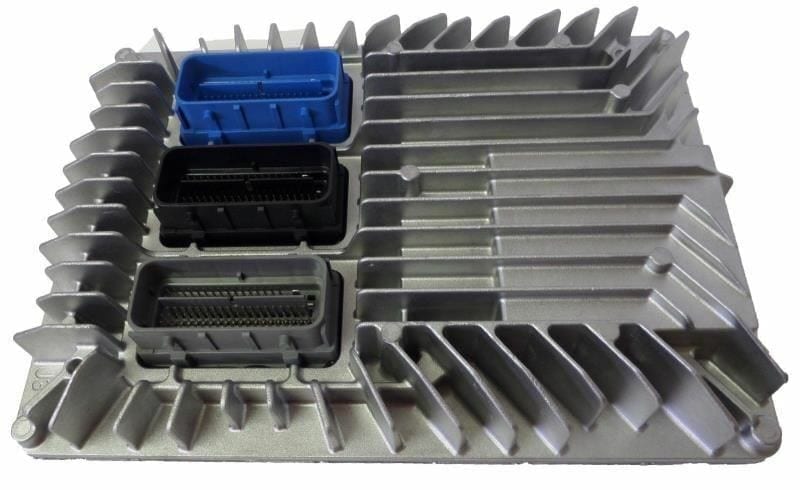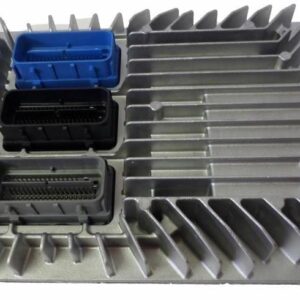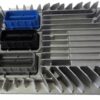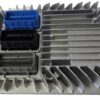Restore Peak Performance to Your Cadillac CTS
Is your 2010-2012 Cadillac CTS running rough, stalling unexpectedly, or showing a persistent Check Engine Light? These are classic signs of a failing Engine Control Module (ECM), the computer that serves as your vehicle’s brain. A faulty ECM can cause a cascade of frustrating issues, from poor fuel economy to a no-start condition. As a technician with over two decades of experience, I’ve seen how a failing module can mimic a dozen other problems, leading to expensive and unnecessary repairs. This module is the direct, reliable solution you need.
This isn’t just a replacement part; it’s a complete service. We take the guesswork and high dealership costs out of the equation by programming this 2010-2012 CTS Engine Control Module specifically for your vehicle. Simply provide your VIN during checkout, and our experts will flash the module with the latest, most stable GM software updates. This ensures perfect communication between the engine, transmission, and other vehicle systems, restoring the smooth performance and efficiency you expect from your Cadillac.
Common Signs of a Failing ECM
- ✔ Check Engine Light is on with codes like P0601 (Internal Control Module Memory Check Sum Error) or P0606 (ECM/PCM Processor Fault).
- ✔ Unexplained stalling or rough idling.
- ✔ Noticeable decrease in fuel economy.
- ✔ Engine misfires or hesitation during acceleration.
- ✔ Transmission shifting issues or harsh shifts.
- ✔ Intermittent starting problems or a complete no-start condition.
- ✔ Communication errors with scan tools (U-codes).
From the Diagnostic Bay: Solving the Phantom CTS Problem
A customer brought in a 2011 CTS 3.0L with a complaint that stumped two other shops. The car would randomly lose power and the traction control light would flash, but it never stored a consistent trouble code. After checking all the usual suspects—wheel speed sensors, wiring harnesses—I focused on the data stream from the ECM. I noticed that the throttle position and engine load values would momentarily drop to zero, causing the hiccup. This pointed directly to an internal processing fault in the ECM. We installed one of these VIN-programmed modules, and the car has run flawlessly ever since. It’s a perfect example of how a failing 2010-2012 CTS Engine Control Module can create bizarre, hard-to-diagnose symptoms.
A Straightforward Guide to Installation
Replacing the ECM on your Cadillac CTS is a manageable job for a confident DIYer. With our pre-programmed module, you avoid the need for expensive dealer tools. Follow these general steps to get back on the road.
- Safety First: Always disconnect the negative terminal from your vehicle’s battery and wait at least 15 minutes for the system capacitors to discharge.
- Locate the ECM: On the 2010-2012 CTS, the ECM is typically found in the engine compartment on the right-hand (passenger) side, often near the firewall or shock tower.
- Disconnect the Harnesses: Carefully release the locking tabs on the electrical connectors and pull them straight out from the module. Never force them. Inspect the connectors for any corrosion or damage.
- Remove the Old Module: Unbolt the old ECM from its mounting bracket. Keep the hardware, as you may need to reuse it.
- Install the New Module: Mount your new, pre-programmed ECM securely onto the bracket.
- Reconnect Everything: Plug the electrical harnesses back into the new module until they click firmly into place. Reconnect the negative battery terminal.
- Final Steps: Some vehicles may require a security relearn procedure, which can often be done without a scan tool by cycling the key. Consult a service manual for your specific vehicle’s procedure if needed. Start the engine and check for proper operation.
Verified Vehicle Compatibility
This module is a direct replacement for part number 12650256 and interchanges with 12616889, 12630908, 12637106, 12642665, and 12651993. It fits a wide range of GM vehicles, including but not limited to:
- ✔ Cadillac CTS (2010-2012) – 3.0L & 3.6L Engines
- ✔ Cadillac SRX (2010-2011) – 3.0L Engine
- ✔ Chevrolet Camaro (2012) – 3.6L Engine
- ✔ Chevrolet Captiva Sport (2012)
- ✔ Chevrolet Equinox (2010-2011)
- ✔ Chevrolet Impala (2012)
- ✔ Chevrolet Orlando (2012-2013)
- ✔ Buick Allure / LaCrosse (2010-2011) – 2.4L & 3.0L Engines
- ✔ Buick Regal (2011)
- ✔ GMC Terrain (2010-2011)
- ✔ Saab 9-5 (2010-2011) – 2.0L Engine
To ensure a perfect match, please provide your VIN when ordering. This allows us to deliver a true plug-and-play solution with the correct software for your specific vehicle options.
Do I need to do any programming myself?
Do I need to do any programming myself?
No. We handle all the programming for you before shipment. We flash the module with the latest GM software updates using the VIN you provide, making it ready for installation right out of the box.
Is this a guaranteed fix for my car’s problems?
This module will fix any issue directly caused by a faulty ECM. While the symptoms listed are common for ECM failure, it’s always best to have a proper diagnosis performed to rule out other potential issues like bad sensors or wiring problems.
What is a VIN and why do you need it?
The VIN (Vehicle Identification Number) is a unique 17-digit code for your car. It tells us the exact make, model, engine, transmission, and other options your vehicle was built with. This information is critical for loading the correct software onto your new 2010-2012 CTS Engine Control Module.
Will this part work for other part numbers?
Yes, this ECM is a direct replacement for several part numbers, including 12616889, 12630908, 12637106, 12642665, and 12651993. As long as your original module has one of these numbers, this part will be a compatible replacement.
Is any special security relearn required after installation?
In many cases, the vehicle’s anti-theft system will relearn the new module automatically. Some GM vehicles may require a simple key-cycle procedure (e.g., turning the key to ‘ON’ for 10 minutes, then ‘OFF’, and repeating three times). This procedure does not require special tools and instructions can easily be found online or in a service manual.



